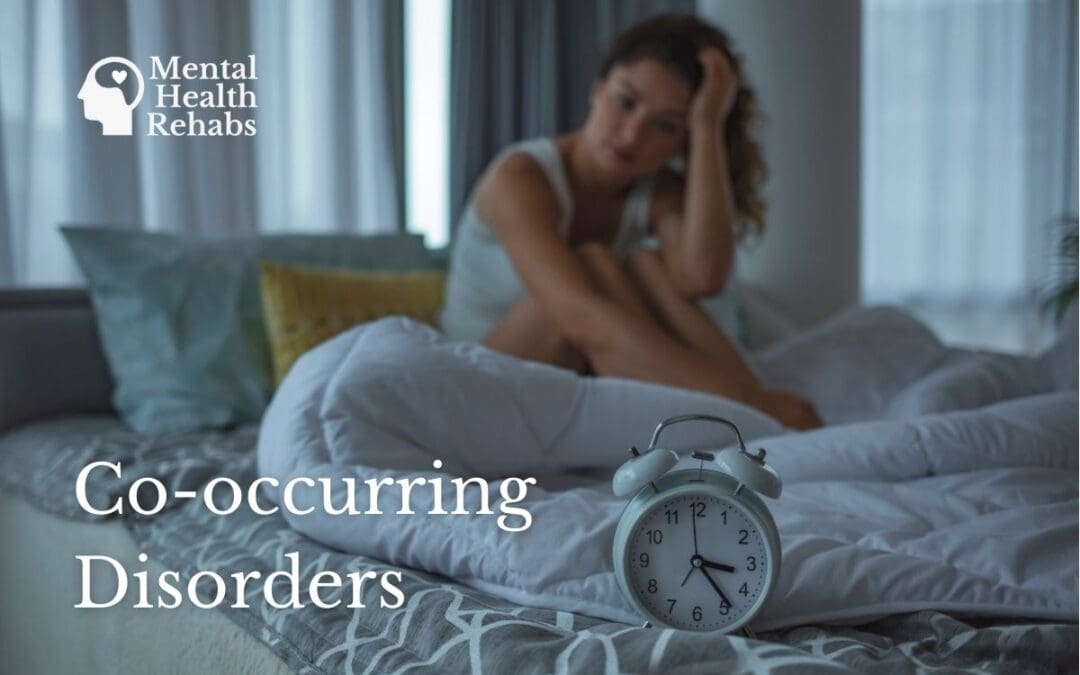Mental illness and addiction are two complex and interrelated conditions that often coexist within a person. The presence of both at the same time is known as co-occurring disorders or dual diagnosis. The connection between these two conditions is multifaceted with overlapping causes, symptoms, and treatment approaches. Further, the origins of dual diagnosis as a concept had a profound influence on the addiction treatment space and still impacts drug rehabilitation today.
A Vicious Cycle: How Mental Illness Can Cause Drug Addiction and Vice Versa
The link between mental illness and addiction can be attributed to several overlapping factors. Both conditions share common risk factors such as genetic predisposition, environmental influences, and neurobiological abnormalities.
Mental health disorders, such as depression, anxiety, and bipolar disorder, can contribute to the development of addiction, especially if the mental illness is undiagnosed. Instead of treatment or medication, individuals may turn to substance abuse as a way to cope with their symptoms or alleviate emotional distress.
On the other hand, substance abuse can lead to the emergence of mental health disorders due to the direct impact of drugs on brain chemistry and neurotransmitter systems. Take marijuana, for example. A study found that nearly half of all psychotic disorders involved marijuana. Individuals with a genetic predisposition face the greatest risk of drug-induced mental illness.
Identifying Co-occurring Disorders
The symptoms of mental illness and addiction can be deeply intertwined, making it difficult to differentiate between them and identify which condition caused the other. As previously mentioned, substance abuse can cause or exacerbate symptoms of mental health disorders, leading to misdiagnosis or underdiagnosis. Conversely, mental health symptoms may be masked or overshadowed by substance use.
The complexity of diagnosing co-occurring disorders requires comprehensive assessments, a thorough evaluation of the individual’s history, and consideration of multiple factors to arrive at an accurate diagnosis.
Additionally, both mental illness and addiction carry social stigmas, which can hinder individuals from asking for help or disclosing their struggles. The fear of being judged or labeled often prevents people from openly discussing their symptoms and seeking appropriate treatment. A reluctance to reveal one or both conditions may lead to only one half of the problem being addressed.
What Does Dual Diagnosis Mean?
Dual diagnosis, a term coined in the 1980s, refers to the simultaneous presence of mental illness and substance use disorder in an individual, emphasizing the need for integrated treatment strategies to address both conditions simultaneously. It is used interchangeably with the term ‘co-occurring disorders’.
The concept of dual diagnosis emerged as a response to the recognition that individuals with co-occurring mental illness and addiction face unique challenges and require specialized treatment. Historically, these individuals were often treated in separate systems of care, with mental health and addiction services operating independently. This fragmented approach led to inadequate treatment outcomes and increased relapse rates.
Dual diagnosis integrated treatment models, such as the Dual Diagnosis Capability in Addiction Treatment (DDCAT) and Dual Diagnosis Enhanced (DDE) programs, were developed to bridge the gap between mental health and addiction services, providing comprehensive care for individuals with co-occurring disorders.
Influence on Addiction Treatment
The concept of dual diagnosis revolutionized the addiction treatment landscape. Historically, mental health and addiction treatment services have operated separately, leading to fragmented care and increased relapse rates.
Recognition of the intricate relationship between mental illness and addiction prompted a paradigm shift towards integrated and holistic approaches. Treatment providers emphasize the importance of assessing and addressing both conditions concurrently.
There are now integrated treatment programs that employ a range of therapeutic modalities including cognitive-behavioral therapy, medication management, group therapy, and peer support, to target both mental health and addiction issues.
By treating these conditions simultaneously, individuals with dual diagnosis can achieve better outcomes in terms of recovery, reduced relapse rates, and improved overall well-being.
Treating Co-occurring Mental illness and Addiction Disorders
Education plays a crucial role in the treatment of co-occurring disorders. Individuals and their families must understand the nature of these conditions, their relationship with one another, and the importance of treatment that addresses both issues simultaneously.
Support groups and peer-led initiatives like Dual Diagnosis Anonymous offer a sense of community, allowing people to share their experiences and learn from others who have faced similar challenges. These support networks can significantly contribute to long-term recovery and ongoing maintenance of mental health and sobriety.
If you believe that a mental illness has contributed to your drug use, or that drug use may be exacerbating underlying psychological conditions, consider talking to a mental health provider near you, today.

